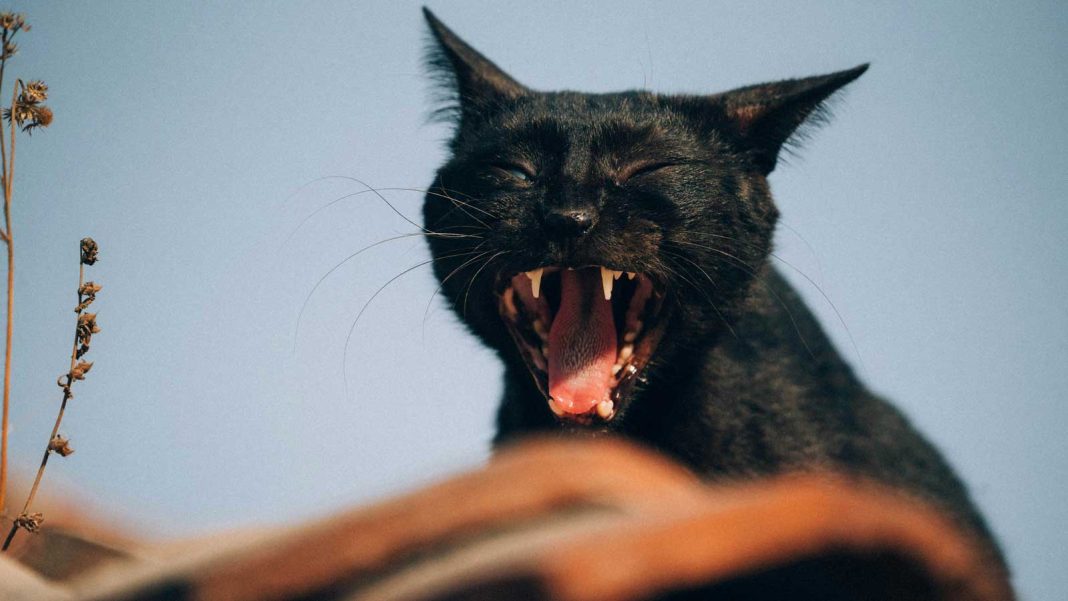A reader asked:
To what extent are cats responsible for climate change?
To answer this question, we turned to the editor-in-chief of Yale Climate Connections, Sara Peach, a longtime environmental journalist. Here is her answer:
Gather round, fans of the world’s fluffiest, most smoochable animal with switchblades in their feet. Let’s answer this question by digging into the scientific literature.
On the positive side, domestic cats (scientific name: Felis catus) don’t produce climate-warming pollution by flying private jets or burning gasoline as they commute to work. And they make a habit of lounging in the nude – no wasteful fast fashion for them.
But they do have a bad ecological rap for killing billions of birds. And like other felines, such as lions, tigers, and cougars, the domestic cat belongs to the order Carnivora, Latin for “flesh devourers.” These creatures depend on animal protein to survive.
Specifically, a cat’s diet must include an amino acid called taurine, which is only found in animal protein, because their bodies are unable to manufacture it. That’s one reason that they rely on us, their human servants, to provide them with meat-laden pet food. And farming animals like cattle and poultry to feed to our pets contributes to climate change, most notoriously because cows burp methane, a gas that traps heat in our atmosphere.
In Mexico, farming enough flesh to keep an adult domestic cat healthy for a year generates 941 kilograms (2,075 pounds) of climate-warming gases, according to one estimate, which was not peer-reviewed. A more detailed, peer-reviewed study used a different methodology to calculate that the production of dog and cat food for American pets generates 390 kilograms (860 pounds) of climate pollution annually per animal. That’s about the same amount of climate pollution emitted by driving a car 1,570 kilometers (975 miles).
Many cat foods include meat byproducts not commonly consumed by people, such as organs, blood, and bone. Using these scraps in pet food reduces waste and climate pollution. But as one study noted, a trend toward “humanization” of pets has led some consumers to purchase pet foods with larger quantities and quality of meat.
So what can be done to reduce the climate impact of cats? Plant-based diets have a much lower climate footprint (pawprint?) than meat-heavy diets, so some researchers are exploring whether domestic cats can survive on vegan diets that include taurine supplements.
A 2023 study suggested that cats fed vegan diets were healthier than their carnivorous counterparts. But that study has been criticized for methodology problems. Most notably, some of the supposedly “vegan” cats were allowed to roam unsupervised outside, where they may have chomped down on birds or rodents.
And much remains unknown about healthy vegan diets for pet cats.
“One challenge that isn’t really addressed in this paper is how a vegan cat diet should be safely put together,” wrote Alexandra Whittaker, an associate professor at the School of Animal and Veterinary Science at the University of Adelaide, in a response to the study of vegan cats.
“Previous studies have shown cats on vegan diets to have severe deficiency disorders affecting the muscles. It may be possible for owners to provide these nutrients through supplements, but this would require an understanding of cat nutrition, or some sound advice from an animal health professional,” she added. “It’s probably wise to wait before letting Felix go completely meat-free.”
Another option: Consider the suggestion by scientist Gregory Okin at the University of California, Los Angeles, to adopt smaller vegetarian or omnivorous pets instead of cats. Many domesticated birds, rodents, and reptiles fit the bill. Rats are smoochable, right?
We help millions of people understand climate change and what to do about it. Help us reach even more people like you.


